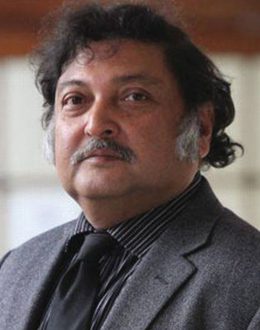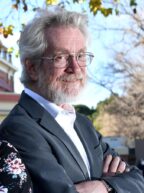
Sugata Mitra keynote speaker
- Educational Technology
- Hole in the Wall Experiment
- Primary Education
- Self Organising Systems
Prof. Sugata Mitra is Professor of Educational Technology at the School of Education, Communication and Language Sciences at Newcastle University, UK.
He is the instigator of the Hole in the Wall (HIW) experiment, where in the year 1999 a computer was embedded within a wall in an Indian slum at Kalkaji, Delhi and children were allowed to freely use it. The experiment aimed at proving that kids could be taught computers very easily without any formal training. Sugata termed this as Minimally Invasive Education (MIE). The experiment has since been repeated at many places.
His interests include Children’s Education, Remote Presence, Self-organising systems, Cognitive Systems, Physics and Consciousness.
The Hole in the Wall experiment has left a mark on popular culture. Indian diplomat Vikas Swarup read about Mitra's experiment and was inspired to write his debut novel that went on to become the Oscar winning movie of 2009 - Slumdog Millionaire.
He is a Ph.D. in Physics credited with more than 25 inventions in the area of cognitive science and educational technology. He was conferred the prestigious Dewang Mehta Award for Innovation in Information Technology in the year 2005. Starting with molecular orbital computation in the 1970s, Mitra discovered that the structure of organic molecules determine their function more than the constituent atoms. After a Ph.D. in Solid State Physics from the IIT, Delhi, he went on to research energy storage systems, first at the Centre for Energy Studies in the IIT and then at the Technische Universität, Vienna, Austria. This resulted in a new design for Zinc-Chlorine batteries.
His interest in computer networking led him towards the emerging systems in printing in the 1980s. He set up India’s first local area network based newspaper publishing system in 1984 and went on to predict the desktop publishing industry. This in turn led to the invention of LAN based database publishing and he created the “Yellow Pages” industry in India and Bangladesh.
His interest in the human mind once again led him into the areas of learning and memory and he was amongst the first in the world to show that simulated neural networks can help decipher the mechanisms of Alzheimer’s disease.
He was amongst the first people in the world to invent Voluntary Perception Recording (a continuously variable voting machine) and a hyperlinked computing environment, several years ahead of the Internet.
Professor Mitra’s work at NIIT created the first curricula and pedagogy for that organisation, followed by years of research on learning styles, learning devices, several of them now patented, multimedia and new methods of learning. Culminating and, perhaps, towering over his previous work, are his “hole in the wall” experiments with children’s learning. Since 1999, he has convincingly demonstrated that groups of children, irrespective of whom or where they are, can learn to use computers and the Internet on their own using public computers in open spaces such as roads and playgrounds. His publication was judged the best open access publication in the world for 2005.
Since the 1970s, Professor Mitra’s publications and work has resulted in training and development of perhaps a million young Indians, amongst them some of the poorest children in the world. The resultant changes in the lives of people and the economy of the country can only be guessed at.
Educational researcher Sugata Mitra was the winner of the 2013 TED Prize

Computational Scientist, Director of MIT Connection Science, Professor at MIT...



